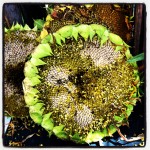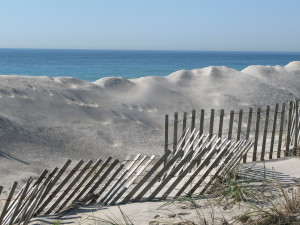 I’m obsessively organized when it comes to Passover. On my hard drive are lists, schedules, and menus. I make slight updates every year, but there are no radical changes. While a tremendous amount of work is involved, Passover prep here is a fairly well-oiled process.
I’m obsessively organized when it comes to Passover. On my hard drive are lists, schedules, and menus. I make slight updates every year, but there are no radical changes. While a tremendous amount of work is involved, Passover prep here is a fairly well-oiled process.
The first thing that happens is the caramelizing of the onions. Once the 14 or so onions are caramelized down to about 3-4 cups of flavor-packed richness after hours of cooking, the real cooking can begin. The first thing to get cooked is the leek-artichoke kugel. The ingredients for the kugel get sautéed in the big caramelizing pot as soon as the onions are done so that they absorb all the flavor of the onions. There’s a method at work here that’s been developed over years of making seders.
And yet, while I may have the prep process down to a science, in truth the recipes change every year. With the exception of baking, I cook by intuition, not recipes. When I made the leek-artichoke kugel this year, I looked back to see the blog that I had written about it last year. I was surprised to see that what I wrote here last year was was different from what I cooked this year.
We change from year to year and so it seems appropriate that not only menus change but recipes do as well. Inspiration strikes differently from year to year. Tastes change, as do dietary needs. Available ingredients change depending on whether Passover falls in late winter or deep into the spring. Today I use as much whole wheat matzah products in my recipes as possible, which is not something I thought about some years ago. This year the seder will include a few wheat-free vegetarian dishes alongside all the matzah-meal-based kugels and the farfel-laden stuffing. Even if your guest list never changes from year to year (and when does that happen anyway??), the people around your table this year are not the same people who sat there last year. What’s unchanged about our tradition is continual change.
When I became a vegetarian years ago, my mother switched to a meat-free tzimmes for me, which has since become the family tradition. Then one year, after I started making my own seder and thus my own tzimmes, I learned that my father’s mother had made tzimmes with prunes, which he had loved. So I began to add prunes to my tzimmes for him, and I added dates as well. He’s no longer alive, but I still think of him when I cook tzimmes (even though I now also add brandy which I know he would not have liked). When my grandmother was alive and well, she made the annual gefilte fish from scratch. It was a major ritual that included a trip to the fish store in Boro Park to get the fish properly ground. Today I use my sister’s recipe for tricolor gefilte fish terrine instead. Change happens, and traditions evolve.
I try to write the recipes down for posterity (ok, because I hope that someday my children will want them) but the real message I want to impart is to be flexible. The point of the seder meal isn’t perfection or achieving a culinary ideal – it’s about history, memory, pleasure, and being together. It’s about the unchanging nature of Jewish tradition bumping up against ongoing change as our lives continue to move forward and evolve. If the recipes change a bit from year to year, all that matters is that it’s good, and that it builds part of a positive Jewish memory of observance. Passover about is about freedom, and so too are we free to be flexible and creative, to keep changing and growing from year to year.
2 peppers, diced (use orange, red or yellow for color)
1/2 cup chopped onion (if none are available, increase to 1 cup)
3 cloves garlic, chopped
2 cups chopped butternut squash
2 cup cooked, peeled chestnuts (make it easy on yourself and buy them vacuum packed, ready to use)
2-3 cups chopped mushrooms
fresh sage, rosemary and thyme
1/2 carmelized onion
6 cups whole wheat matzah farfel
8 eggs
4 cups vegetable broth (use more if too dry)
salt and pepper to taste
1. Sautee peppers, fresh onion, garlic, mushrooms and chestnuts until soft. Chop herbs and add.
2. In a large bowl, beat eggs; add farfel and broth and let farfel absorb the liquid.
3. Add vegetables to farfel mix. Add caramelized onions, if using. Add salt and pepper.
4. Mix well until all ingredients are blended.
5. Glaze pan with 1/4 broth or water and pour over mixture, blend well.
6. Pour into large greased pan.
7. Bake at 350 for 1/2 hour. Freezes well once cooled.
Note: Because I am a vegetarian, I do not actually stuff the stuffing into meat. However, it could be stuffed rather than baked as above.


















